In the late fall of 2018, I started doing what most folks in Maine do during the cold weather after our boats are put away: thinking about our next boat. My wife and I had just finished the summer with our 19′4″ Simmons Sea Skiff and started to make a list of attributes for the perfect boat to explore the waters of our home state.
We loved our Sea Skiff but it was not dry or comfortable in a steep chop, boat wakes, or the bone-jarring standing waves that form on the Piscataqua River. Our new boat would be heavier and have a more forgiving hull shape. It would be easy to trailer with a half-ton pickup and have a cabin with a V-berth for sleeping as well as an open cockpit for fishing and sitting out in the fresh air. It had to be something I could build in my home shop and, naturally, attractive. My wife and I love wooden boats and could not think of considering anything else.
Over that winter, I haunted a lot of forums and websites and found my way to a monthly newsletter by boat designer and builder Arch Davis of Belfast, Maine. It provided a wealth of helpful information, pictures, and testimonials about his boats, including the Jiffy V-22.
The following March, I happened upon a classified ad listing an essentially new boat, engine, and trailer at a very reasonable price. The pictures weren’t great but the boat was intriguing. I kept coming back to the ad and eventually realized the boat was an Arch Davis Jiffy V-22. The seller said it had only been in the water once, to break in the motor. The boat was powered by a 2011 Mercury Optimax 150-hp outboard that had just one hour clocked on it. I mailed a deposit, made the drive to see the boat, and bought it.
The boat is beautiful, with lots of gleaming mahogany and ash, and first-class fit and finish including lots of brightwork. Eventually we can foresee the cabintop and side decks being finished with paint or Dynel as most V-22s seem to be. This boat’s wheelhouse was not completely true to Davis’s design. Instead of a hard cabintop, the boat came with a bimini top and canvas sides.
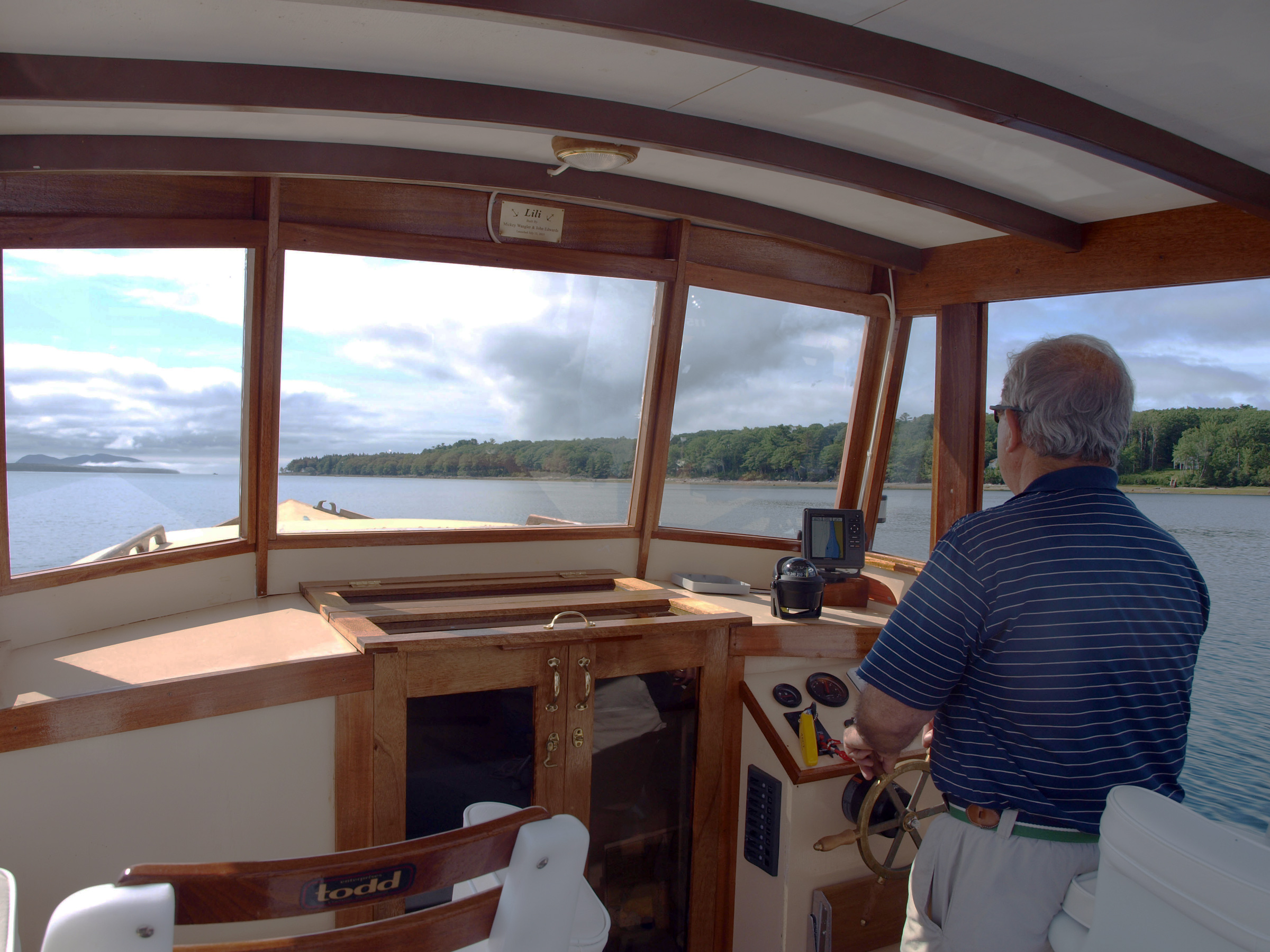 Arch Davis
Arch DavisIn this Jiffy V-22, built by John Edwards, the wheelhouse is built according to the plans. The tall windows and high cabin roof provide plenty of standing headroom at the helm.
The Jiffy V-22 is 22′ 6″ long, has a beam of 8′ 6″, and draws just under 2′. With its cabin, it is reminiscent of classic Maine lobsterboats, and is designed with a V-berth, a seat with access to storage space, and a small galley cabinet to accommodate a two-burner portable stove. Our cabin has shelving on each side for storage, space for a porta-potty, a long shelf along the cabintop on each side, and hatches in the cabin sole. Our boat has two opening side windows and a hinged skylight vent, all with screens. There is some storage below the cabin sole.
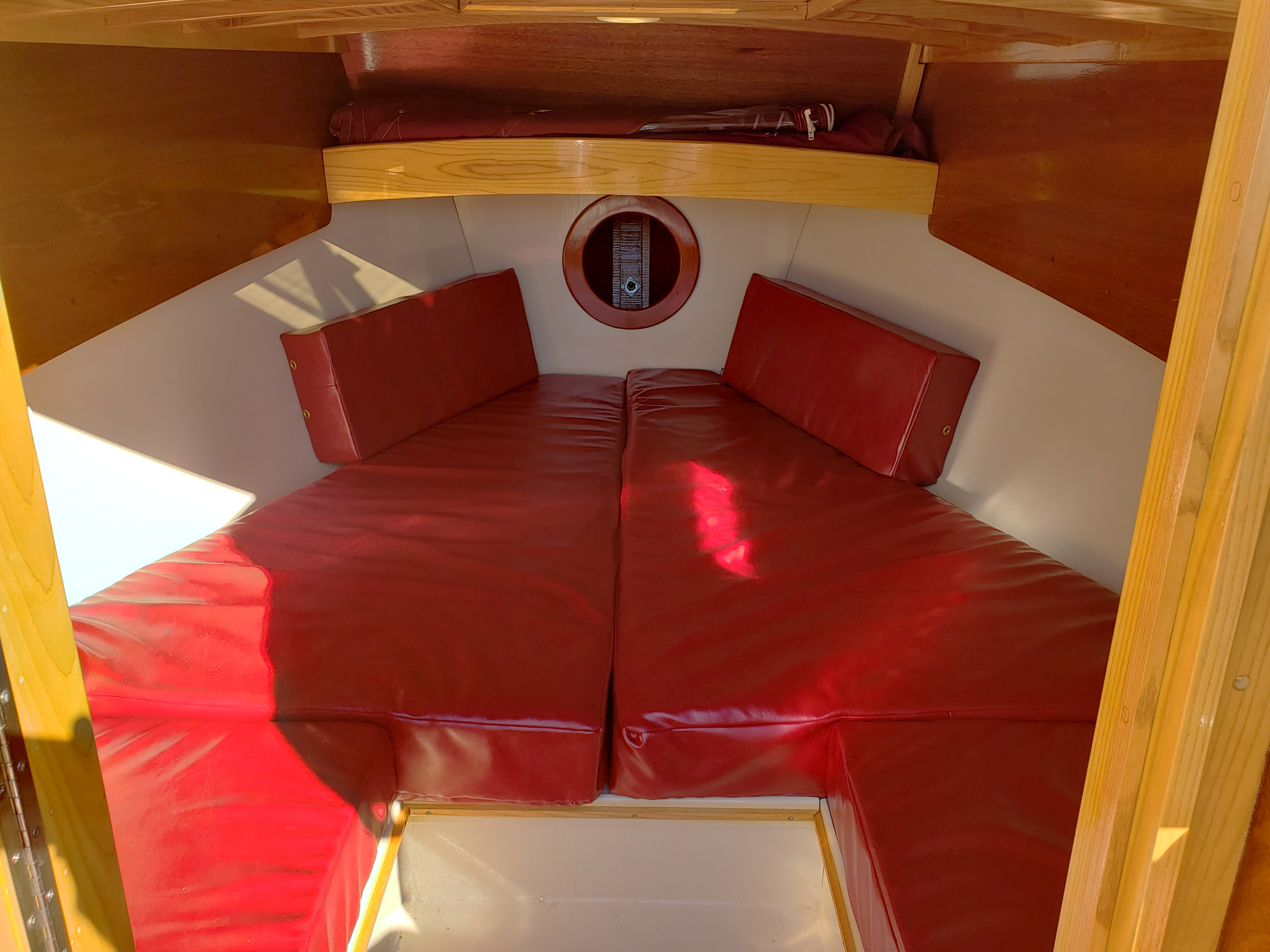 Dave Ranta
Dave RantaThe cabin in the author’s boat offers berths for two. A panel covers the footwell when it’s time to turn in and the two cushions, here propped against the sides forward, complete the V-berth.
The cockpit area is large—6′10″ by 9′. The layout of our boat followed the recommended location of the wheel and controls. The design leaves open the options for cockpit seating and accessories. Forward, we have two high, fixed seats with footrests. The helm converts to a leaning post. The cockpit is set up to be self-draining.
The author’s Jiffy V-22, with its canvas wheelhouse in place, is equipped with a 150-hp outboard. It’s above the range specified in the design, but will get him home in a hurry if bad weather is coming in.
We have trailered our Jiffy V-22 with three different half-ton pickups. We’ve put in at five locations so far and found that we could launch and retrieve the boat with no issues at any of them. Launch time at a ramp is no more than five minutes; retrieval is a bit longer, 10 minutes, because of winching. We don’t back the trailer completely underwater at launch or retrieval: the boat rolls off easily on the ramp when launching, and when reloading, I winch it most of the way out of the water and up the trailer’s roller bunks. Arch Davis reports the displacement of the boat when loaded with fuel, passengers, and motor at 3,350 lbs. Estimated towing weight with the trailer is just under 6,000 lbs. Our boat sits high on our trailer because of the rollers and requires a 10′-high door to get in our shed. A different trailer set up could probably reduce that to a 9′ door height. We have a dual-axle trailer and it cruises well behind our truck at 65 to 70 mph on the highway.
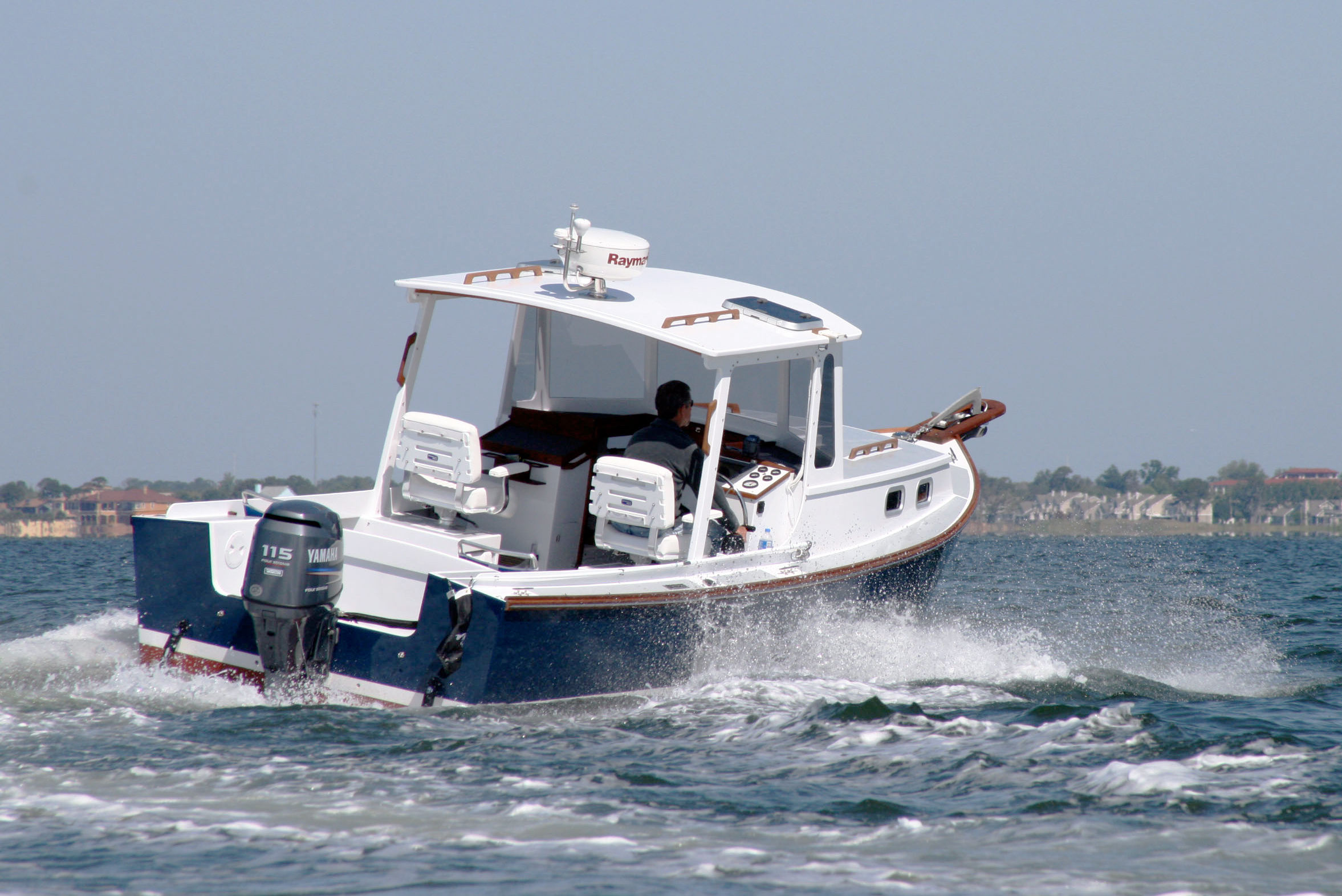 Courtesy of Arch Davis
Courtesy of Arch DavisThis Jiffy V-22, built by Robert Mason, carries a 115-hp outboard, the maximum power recommended. He reports the boat does 35 mph at 5,800 rpm, cruises at 25 mph, turns in its own length, and runs very dry.
Power for our Jiffy V-22 is a Mercury Optimax 150-hp two-stroke outboard. Davis recommends power in the 60- to 110-hp range, so we’re a bit overpowered. The original owner told me that sometimes he needed the extra power to get back to the ramp a little faster when the weather changed. I’ve never gotten to wide-open throttle when underway. At 6,000 rpm the boat does over 30 mph. I’m guessing it could get to 40 mph with this outboard, but speed for the sake of speed isn’t that interesting for us. The Optimax 150 weighs in at 455 lbs. A 115-hp four-stroke outboard ranges from 386 to 500 lbs. I’m not advocating for a motor of the size we have, but it does not seem to overload the boat.
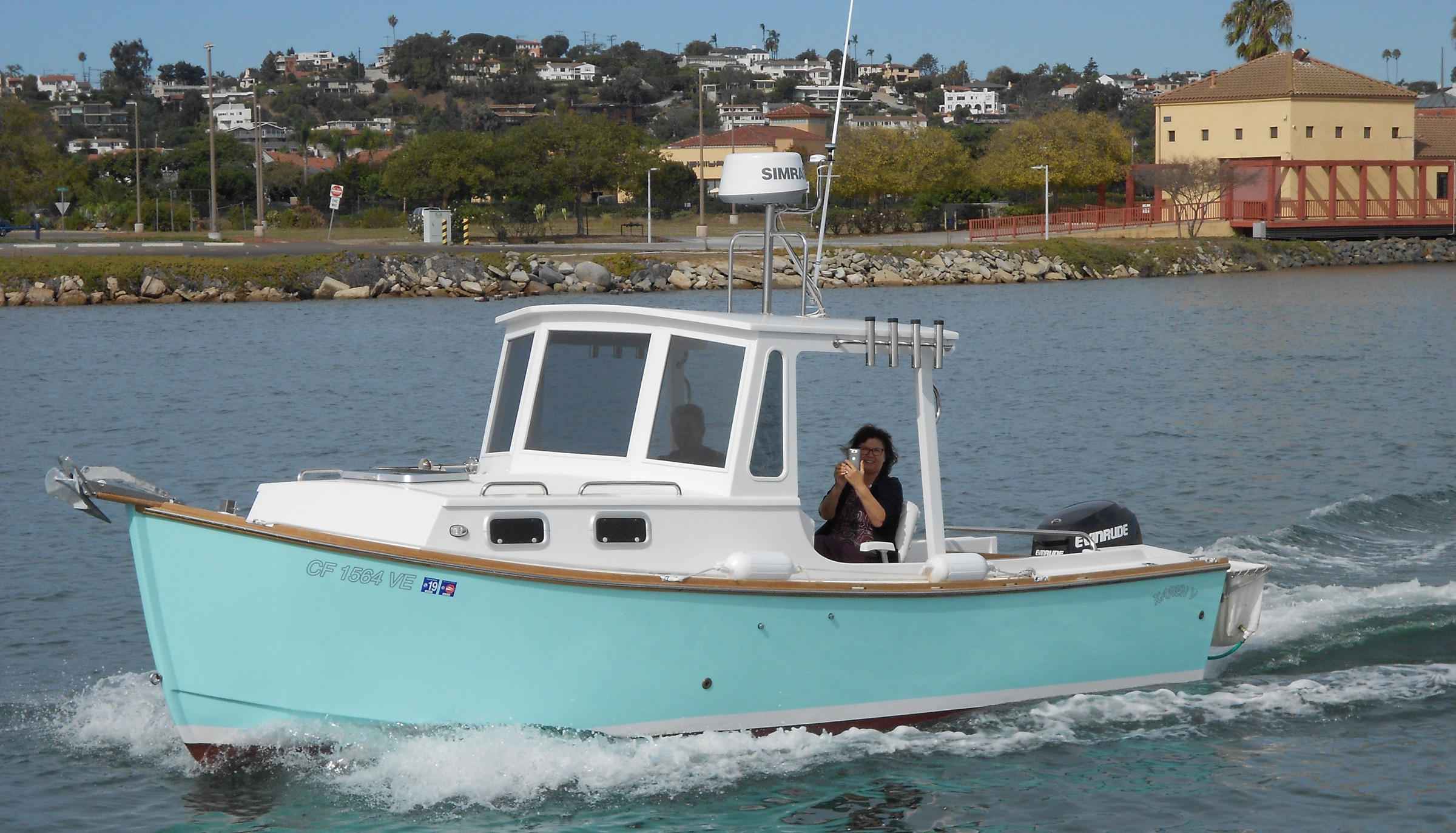 Courtesy of Arch Davis
Courtesy of Arch DavisKAREN V, a Jiffy V-22 built by Alan Nephew, is rigged for fishing with rod holders port and starboard at the cabin-roof perimeter and a live-bait well hung from the transom.
The engine is fueled from a 40-gallon stainless-steel vented tank below the cockpit sole. Fuel consumption, of course, varies greatly with speed. The Optimax sips fuel at trolling speeds— just 0.7 gallon per hour—but, according to the gauges, guzzles 9 gallons per hour at high speed. We tested the boat on Casco Bay by running the boat as if it were a displacement hull traveling at 7 knots, and fuel consumption was between 0.9 to 1.2 gallons per hour. We’ll probably repower with a four-stroke motor in the 90-hp range someday.
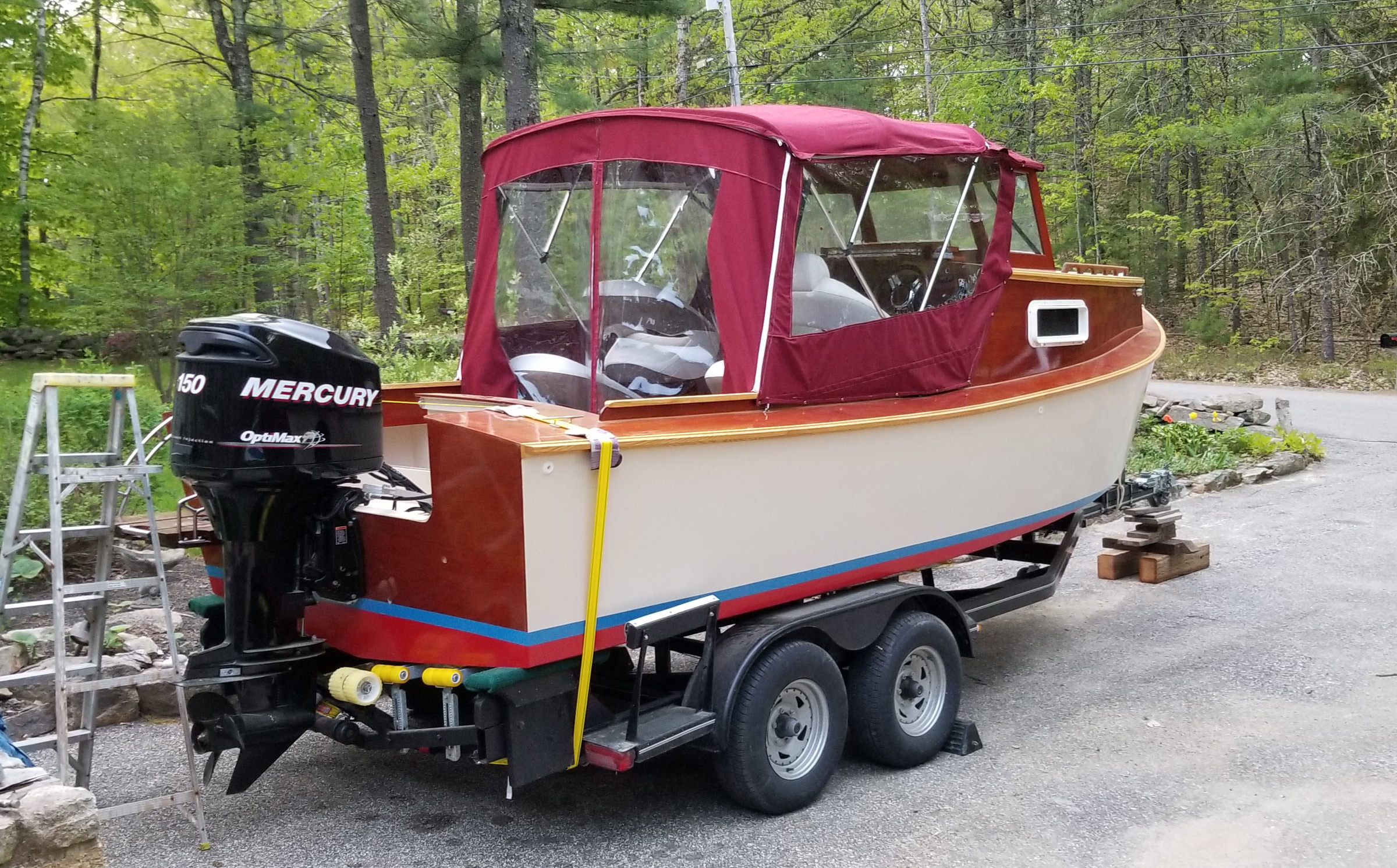 Dave Ranta
Dave RantaThe author’s Jiffy V-22, with its canvas wheelhouse in place, is equipped with a 150-hp outboard. It’s above the range specified in the design, but will get him home in a hurry if bad weather is coming in.
This is our first “big boat,” quite unlike the light, flat-bottomed or semi-V hull skiffs we’ve previously owned. Having a boat with a cabin and a V hull is new, too; in fact, we’ve never owned a boat that I couldn’t pick up one end or the other with another person helping me. This boat is a completely different experience. We love the way the Jiffy V-22 feels on the water. We can cut through wakes and chop with comfort. The boat is dry. It seldom takes a wave or spray that isn’t handled by the chine and windshield. We can get on a plane quickly but also enjoy taking it easy and traveling around at lower speeds. The boat handles well. It responds to small adjustments of the wheel and handles turns at higher speeds without skidding. It is also easy to dock, especially compared to other lighter boats we’ve had that are more affected by the wind.
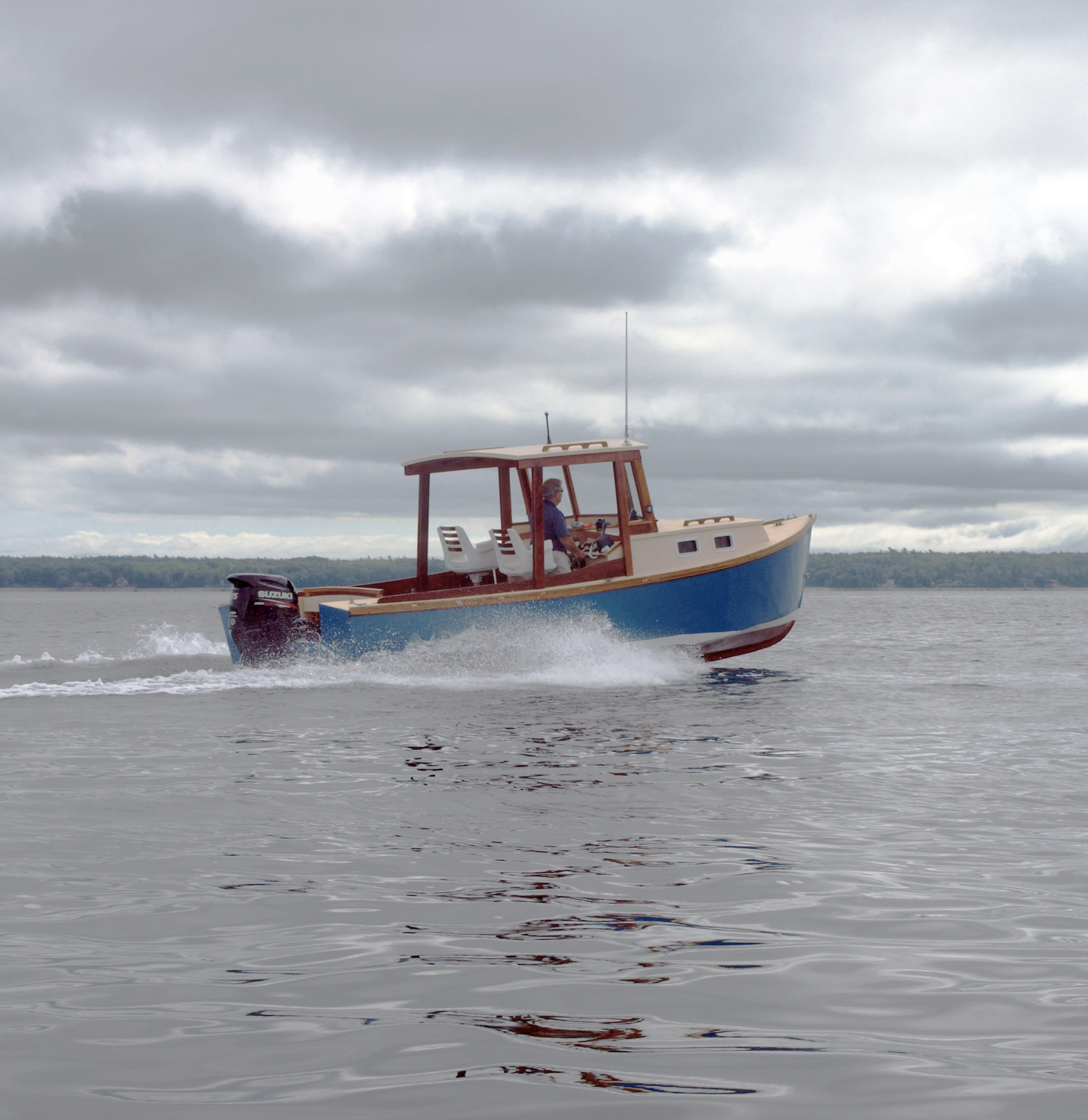 Arch Davis
Arch DavisOn the Jiffy V-22 built by John Edwards, handrails make it possible to tiptoe along the gunwale to get to the foredeck.
After a couple of shakedown cruises in and around the waters of Portsmouth Harbor, we’ve traveled up the coast from Kittery to Ogunquit, Maine, out to the Isles of Shoals, in Casco Bay from Portland out to Jewell Island, and have made several trips on Sebago Lake. It’s a comfortable ride while underway—we felt secure and comfortable on all of these trips. On one outing, we had six adults onboard for a day and the handling was fine; with all the power available, we saw no reduction in either speed or acceleration. Control was still good, and I really didn’t notice much difference while I was at the helm.
The cockpit feels safe and secure, and provides a good balance between being able to handle docklines and fishing gear over the side while feeling safe moving about in moderately choppy water. We did one overnight—our first ever—at Pepperell Cove in Kittery. The cabin is roomy enough for two to sleep and has enough extra space for the porta-potty and making coffee, etc. The opening windows and skylight that we installed allow for plenty of fresh air.
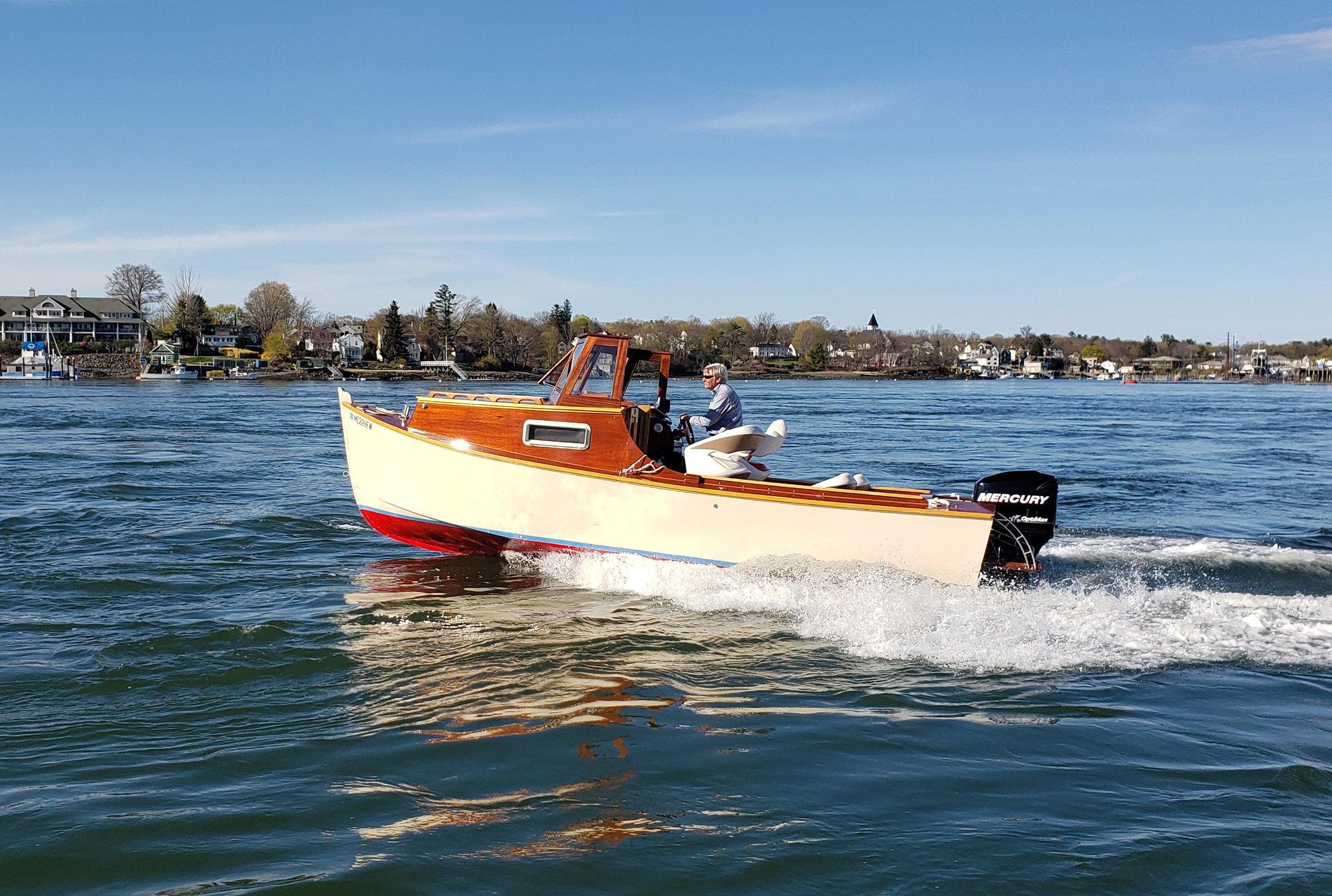 Dana Ranta
Dana RantaThe Jiffy V-22 purchased by the author was built with a fabric top to enclose the helm. During fair weather it could be removed to take in the fresh air.
As I mentioned, our boat was built without the cabintop that Arch Davis designed and with a different, lower windshield. We have removed that windshield and I have replaced it with one that matches the original design proportions with the addition of a center window sash that opens to allow airflow into the cockpit. If I were building the boat new, I’d recommend at least one windshield window being openable; it got warm and stuffy on hot days when the top was up. We’ve decided to run the boat this summer with the canvas top, once again. Being mostly fair-weather boaters, we like the option of running the boat with an open top. In early- and late-season boating, there is likely a lot to be said for having the hard top. We’ll make up our minds on that after this season.
We’re happy with the Jiffy V-22. Arch Davis has designed a boat that can be trailered to the places you’d like to explore with the capabilities to handle the conditions you might encounter. We have never taken this boat on the road or the water where folks haven’t given us a thumbs-up or a “Nice boat!” shouted across the way. It really is a nice design.![]()
Dave Ranta lives with his wife, Dana in Cape Neddick, Maine. Dave manages a utility construction team based in New England. Since moving to Maine in 1982, Dave has had a number of different small boats, all wooden. He and Dana enjoy fishing, lobstering, and taking the Jiffy up and down the Maine coast and to the large lakes.
Jiffy V-22 Particulars
[table]
Length/22′ 6″
Beam/8′ 6″
Draft/9″
Displacement/3,350 lbs
Power/65–115-hp outboard
[/table]
Plans for the Jiffy V-22, which include full-sized Mylar patterns, drawings, and building manual, are available from Arch Davis Designs for $325 plus postage and handling. Inquire for plywood kits.
Is there a boat you’d like to know more about? Have you built one that you think other Small Boats Magazine readers would enjoy? Please email us!

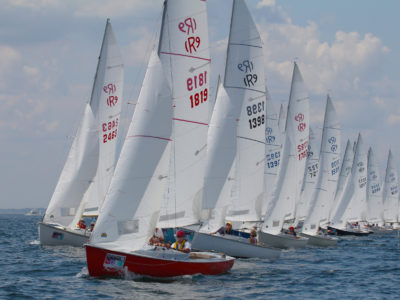
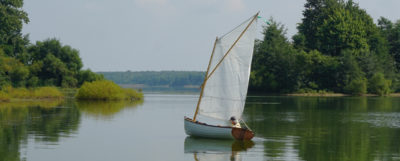
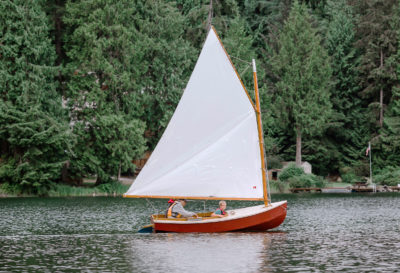
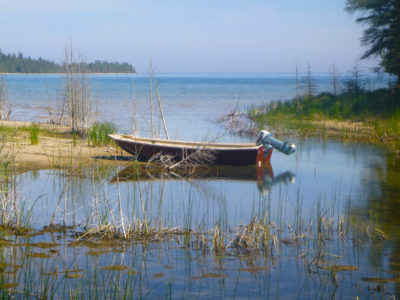
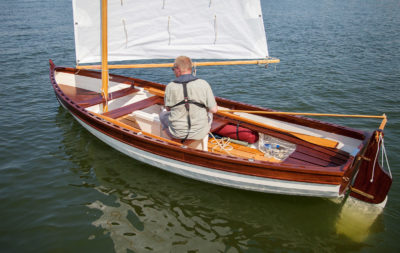

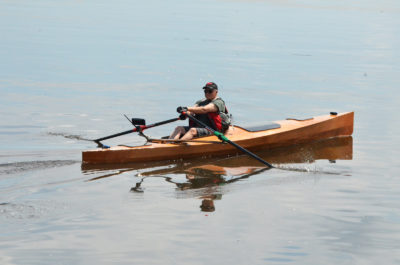
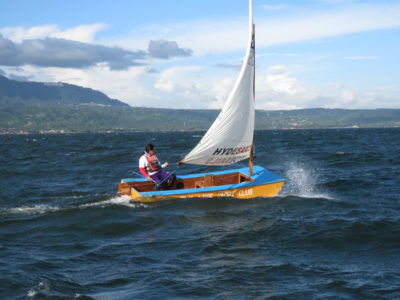
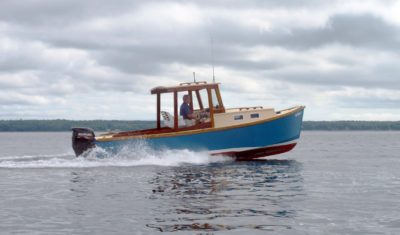
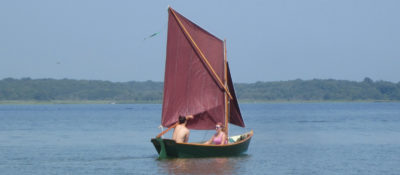
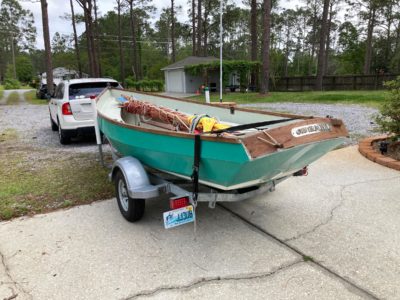
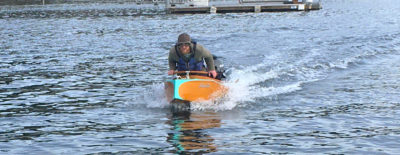
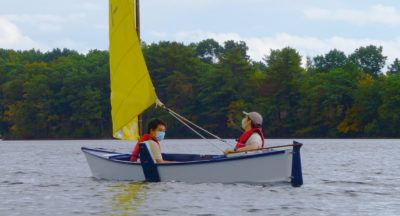
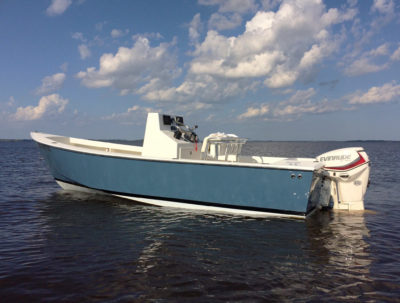
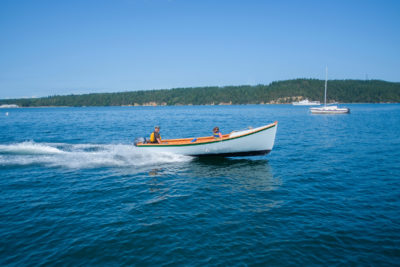
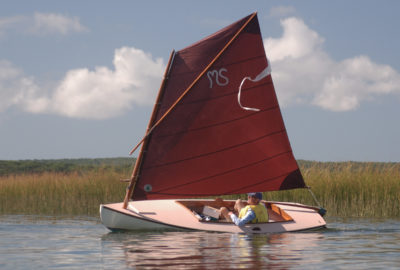
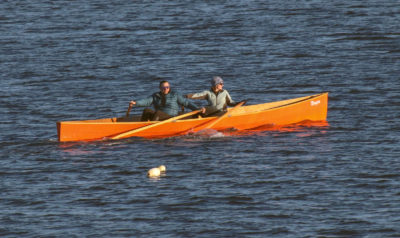
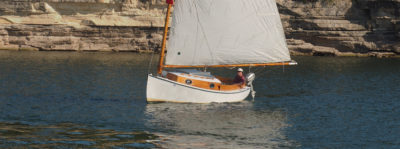
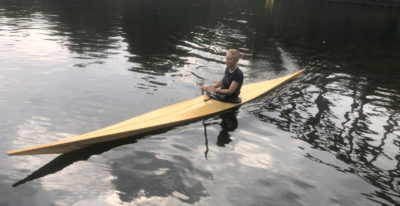
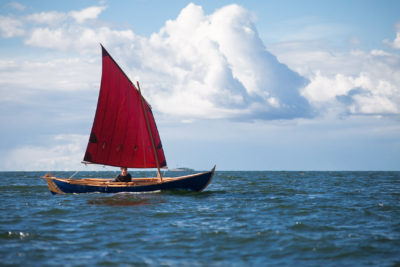
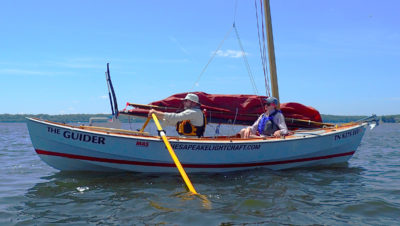
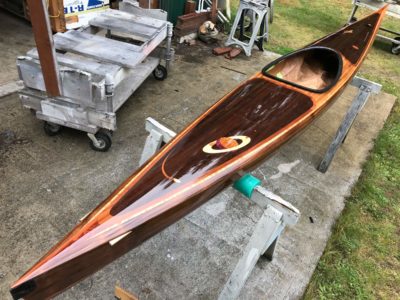
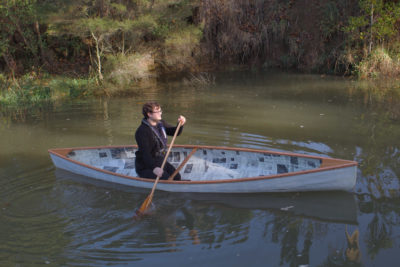
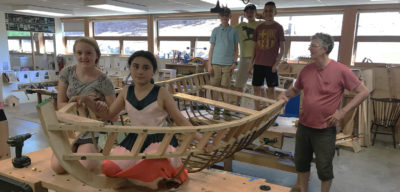

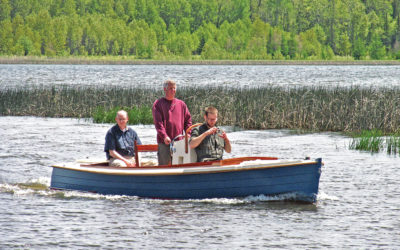
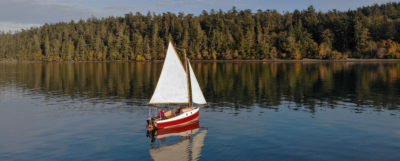
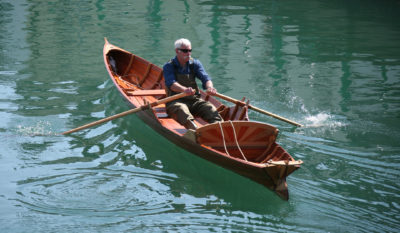
We’ve been peeking at that design since we built Arch’s Penobscot 14. Nice review that highlights some differences that can be tailored in to suit the owner’s desires. Thanks for the great photos!
Cheers
Skipper and Kent
Thank you, folks.
We bought this boat completed, but have been tailoring it for our needs and use. That’s the beauty in working with wood.
Dave
Hello Dave & Crew,
I´m Stephan writing from Germany – your great article about the Jiffy V22 and its possibilities were so informative, that it gave a big push to a sort of a lobster-boat project I can´t get rid of.
Soon will order a set of study plans from Arch Davis, one of the Jiffy V22 plus one of the Jack Tar design. To make the shipping costs pay. And to see what happens next.
Thank you for Text & Pictures.
Stephan
Stephan,
I think that both are good-looking boats. The Jack Tar, although simpler and lighter, seems to be suited more for use in protected waterways due to the hull configuration.
Good luck,
Dave
That is a nice boat, Dave. I remember seeing you a couple of years ago in Peppeprell Cove. Having the protection of the cabin and windshield plus the V hull forward must be nice. I went out in Boston harbor today with my sons John and Brian in our Lumberyard Skiff. With the 25-knot winds and a little chop, we got soaked anytime we went within 90 degrees of the wind. I will be looking for you on the Piscataqua once I get my sailboat in Boston and go back to trailering the skiff.
Peter,
Nice to hear from you. We do enjoy the different places to access with a trailer. One day in Portsmouth, another on Sebago Lake.
We’ll watch for you.
Cheers,
Dave